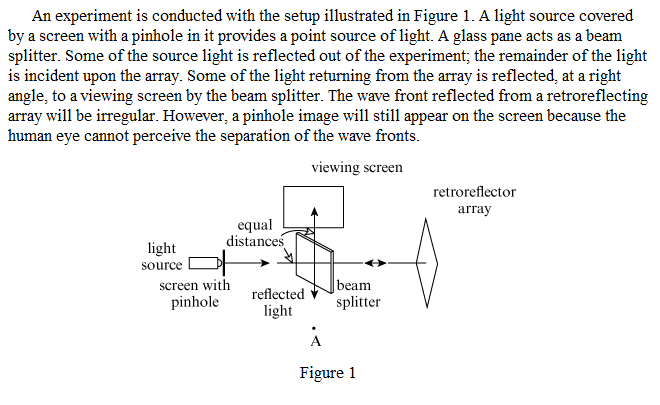Was this in a passage? Or a really long discrete lol.
Its a pretty confusing diagram, but i got it now.
The light makes essentially travels in a straight line from source to reflector (it refracts in glass, but then essentially undoes that refraction when it returns to air). It reflects off the reflector in the exact same direction as it came (the angle of incidence on the reflector is zero, so the reflected light has an angle of zero as well and travels straight back). It hits the beam splitter and reflects and a 45 degree angle, right? This action should EXACTLY mirror the first reflection of light (from the source to the splitter) since none of the incident angles changed. Thus the angle of that reflection must be 45 degrees also. If the angle from the light to the normal line is 45 (the definition of an incident angle of 45 degrees) then the angle from the light to the splitter must also be 45 degrees since the angle from the splitter to its normal line (or any surface to its normal line for that matter) must equal 90.
This was a REALLY wierd problem and pretty time consuming!


 Oh well.
Oh well.